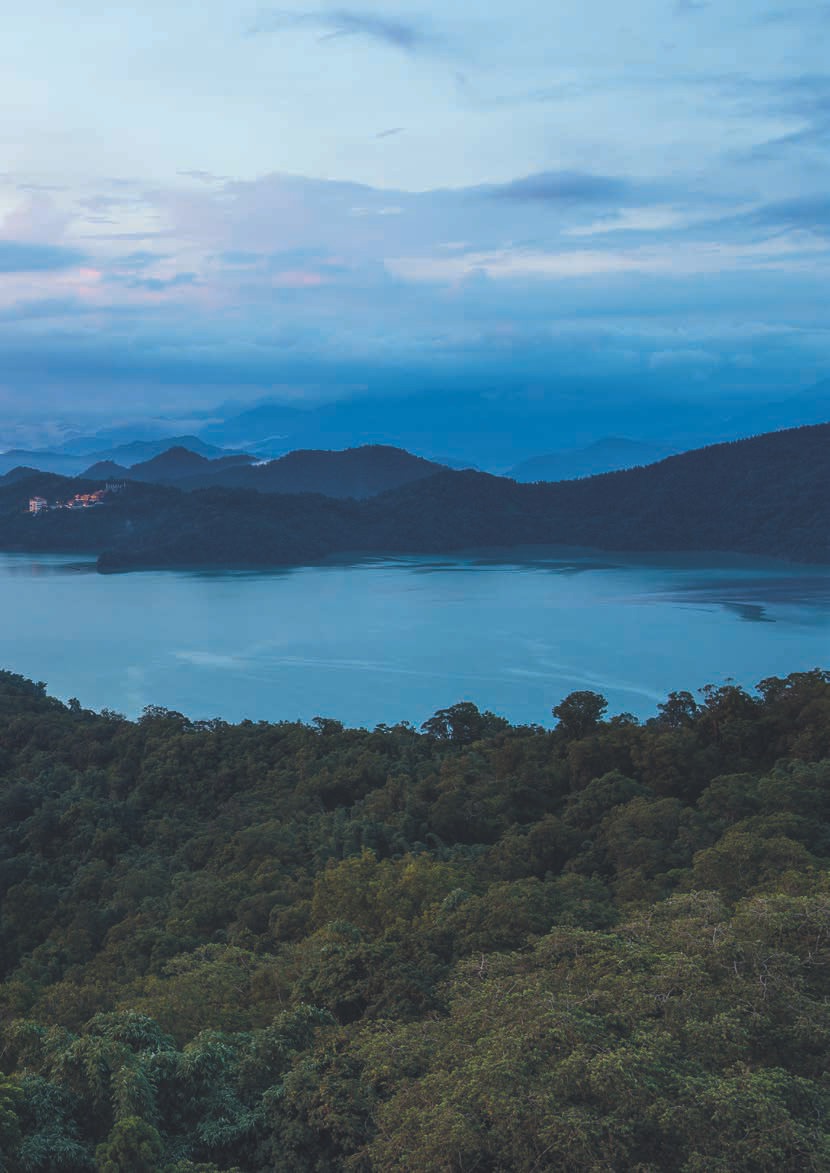
 |
|
Over the course of this month, we return once again to the only tea we send every year: Elevation. This magical tea is so important to us all. So many of you sitting around this circle, sharing tea in this growing global hut started your journey with this very tea - the perfect bowl tea to begin a tea journey. And for those of you trying it for the first time, we hope the simple roots this glorious tea taps into help you to deepen your connection to Tea. Elevation is the quintessential bowl tea because it is so simple and unadorned. It is a raw and natural tea, vibrant with the life and energy of a beautiful environment, a pure-hearted steward and a long love affair with our beloved Hut.
Elevation represents what is pure in tea to us because of the reclamation of human industry by Nature. This farm was amongst those planted by the Japanese when they controlled Taiwan, to produce red tea for export, fueling their growing empire and its industry. The tea was planted over the hills in nice plantation rows - the kind that efficiency, productivity and consumerism prefer. After the Japanese were expelled, however, most of these gardens were abandoned for several decades, and the tea trees thrived, organizing themselves as Nature intends: sporadically filling forests and seed-propagated wild children all around. Though this return to pure and pristine farms was accidental, it is still a road map for tea producers and tea lovers alike to return to reciprocity and honor with Nature, producing great tea without harming the ecology of the mountain.
The second reason that Elevation is pure is Mr. Su, the steward of this farm. While other farmers around him have grown rich by turning their mountains back into plantations with high yields, Mr. Su has stayed committed to organic, healthy farming. He enjoys the dialogue with Living Tea. He has told us on several occasions that he "talks" with his trees. We once asked him if we laid out a few thousand photographs of natural, seed-propagated tea trees (which are all unique, as tea is a sexual plant) from the Sun Moon Lake area, how many of his own could he identify. He said, "Around eighty percent." At first, we were astounded, but then, spending time with Mr. Su over the years, we have come to understand what he means. He literally lives with these trees, visiting them every day, watching their needs and tending to them gently and with love. Of course he knows them. If we showed you pictures of a few thousand people in your city, you could also pick out at least eighty percent of the ones you've met! And these are his friends, he has said as much.
While others around him have built mansions with the profits of tea, Mr. Su has resisted temptation and maintained a simple life in the same small house he has always lived in. He seems joyous and honored to steward these trees, caring for them as a true Chajin. He often astounds us with the simple, down-to-earth, yet incredibly deep wisdom this life has afforded him. One year, there was a drought and he told us that he didn't mind: "If I don't accept the times when Heaven gives me less, how can I rightly celebrate times of abundance? Besides, my father taught me to put some aside during times of abundance, as times of decline will surely befall us all." Seeing such a bright and glowing example of a human being and a sustainable lifestyle at the end of a street of large, rich and adorned houses, is incredibly inspirational. And Elevation glows with the love of a man who has devoted his life to its care, and done so with a smile.
If there are to be tea masters in this world, it is the farmers - not those skilled in brewing tea! It is one thing to live simply and completely sustainably when everyone is, or when conditions are thus. It is another to choose this and stand up as an example of what tea farming can look like: letting Nature take her course, being grateful for whatever She provides, viewing yourself as a steward of the land rather than an owner and talking as well as listening to the trees as living beings with spirits and dignity. We all know the effect love between people and recognize the detrimental effects that result when children aren't shown affection, for example, or the way a hug makes us feel, but why don't we realize that the same applies to our relationship to non-human beings and the land itself? We've all tasted a so-called "conventionally grown" tomato and one grown in a relative's garden who loves gardening. Aren't they different in every way? In flavor and aroma? The way they feel in our bodies? The relationship a farmer has to his or her land will determine so many factors, many of which are even quantifiable and can be rationally studied, and others that are more spiritual. The fact is that Mr. Su is as natural a part of the ecology of the tea mountain as the insects or rabbits: just another organism that lives there and gives and takes in equal measure. This is how tea should be.
Finally, Elevation is special to us because it has been with this community since the beginning. Mr. Su is not a businessman and has never marked his tea up, earning just enough to maintain a humble life. Since this tea has always been so pure, full of radiant Qi and very affordable, it has provided us with a way to expose so many people around the world to an accessible tea practice. But that's not the reason we send out Elevation every year. That has to do with our promise.
Some of you who have been here a while know that a few years back we made a promise to Mr. Su that every year at the end of the season we would buy whatever tea he had left unsold. He cried, saying that if we did this, he could focus on just being a farmer, which he loves, and let go of the selling side of tea, which he is not great at and doesn't enjoy. We have been true to our word, continuing this promise right into the very tins you are opening this month! We made this promise on your behalf. We have always intended for this community to have a positive impact on the environmental sustainability of tea production. It is great to have big ideals, but real promotion on a personal level that affects the life of a local farmer who is doing things right is also a great way to help change the world. Mr. Su told us to tell you all how grateful he is that your contributions are helping him in this way once a year. Drink this month's tea proudly!
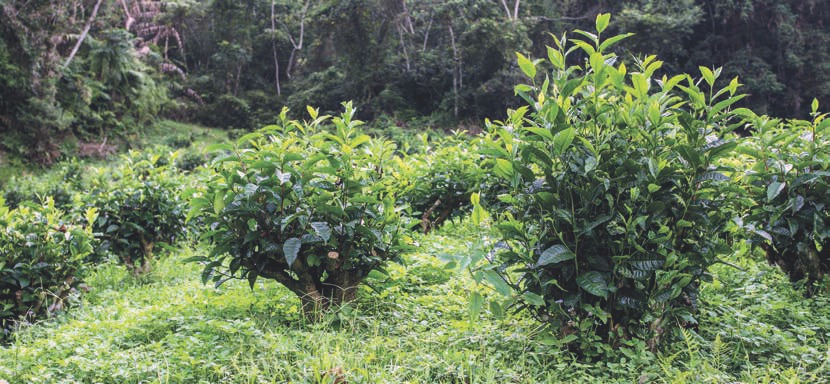
Tea leaves do not arise from the ether - they are a product of their environment. In past issues, we have thoroughly covered the processing of Elevation. Last year, in the October 2016 issue, we published a photographic journey of Elevation through all its stages of processing. If you are interested, you should take that issue down from the shelf or head over to the "Past Issues" section of the website. We thought that this year, we would take a trip to Sun Moon Lake and share with you all our favorite sites to see there. No trip to Taiwan would be complete without a foray to this glorious natural wonder, and the tea is a product of all the beauty there. Travel with us in spirit as you sip this month's Elevation. One of the great joys of visiting a tea-growing region is that whenever you drink that tea, you are automatically transported back to the mountains that created it. We hope that you get to share some tea in Sun Moon Lake with us one day, and travel to all the beautiful sites we will show you on the coming pages, but in the meantime, let these pages carry you there. And may you find the beauty of Sun Moon Lake in each sip of this month's tea!
Aside from visiting Mr. Su, drinking some Elevation and seeing his beautiful trees, we always stop at the Taiwan Tea Research and Extension Station. This station has been here for decades and is responsible for the creation of several of Taiwan's most famous cultivars. The farms are beautiful, and many are natural and organic as well. On the way up the mountain, which passes one thousand meters, you can see lots of old-growth trees. There are many trees that are more than a hundred years old, and some have been allowed to grow up over the last couple of decades, reaching heights above ten meters. These old trees are wonderful to sit under and have a nice, quiet session of Elevation bowl tea, with the hum of the forest just above you, which hints at a deeper Nature that should not be intruded upon. There is nothing like drinking some Elevation under some of the oldest mother trees in the area. If you are respectful, they seem to look on with blessings and fill each bowl with their presence. (If you sit in the right spot, you can even see the mother trees reflected in your bowl.) These hills are one of the best spots to feel connected to the source of Tea in all of Taiwan.
From the top of the station, you can see a tea processing facility and a nice view of the lake below. There are several experimental gardens growing here, including some for research into the long-term effects of inorganic farming as well as the time and effort needed to restore ecologies. They have shown that agrochemicals destroy the soil over long periods of time, making the land fallow. You can see Taiwan 18, "Ruby Red (紅玉)," which was our Tea of the Month in March 2016, as well as other varietals of Taiwanese tea. A session below the mother trees and some prayers of gratitude are a must for the Chajin traveling to Sun Moon Lake.
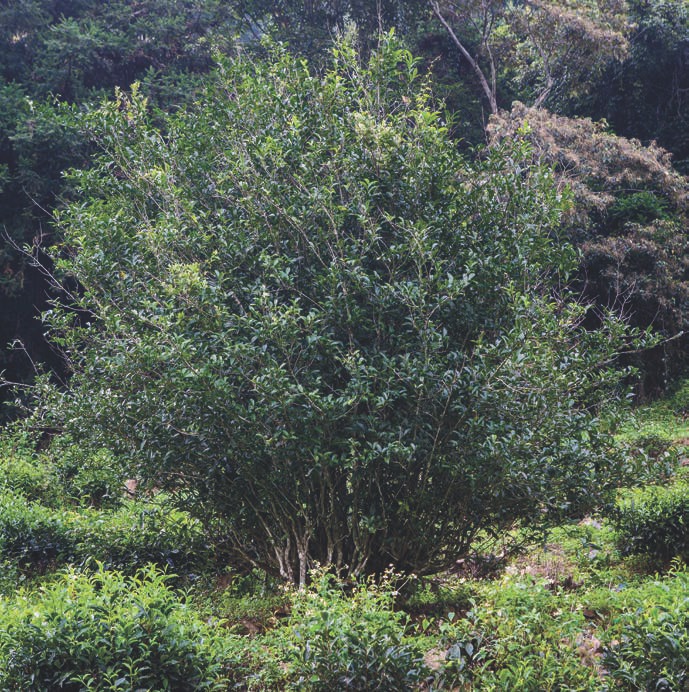
There were two Wen Wu temples long ago, but the Japanese built a dam that raised the lake's water levels and the temple was moved to its current location in 1938. In 1969, the temple was completely rebuilt by the Taiwanese government as part of a project intended to increase tourism to the lake. There are three shrine halls, rising one after the other in this elaborate temple. The first is devoted to Shennong (神農大帝) and the God of Literature (Wen Chang, 文昌帝君); the second has a shrine to Guang Gong (關聖帝君) and Yue Fei (岳飛), who are guardians that protect the virtuous; and the final hall is for Confucius (孔子). This temple is famous in Taiwan amongst students, who come here to pray to the God of Literature and Confucius for successful exams. The temple is beautiful, with sculpted dragons and prayer bells hanging everywhere. Across from the temple is one of the best views of the lake. As students of the Leaf, we always stop here to give thanks for all that we have learned and to pray for successful study. This keeps us in a beginner's mind: humble and empty like a tea bowl.
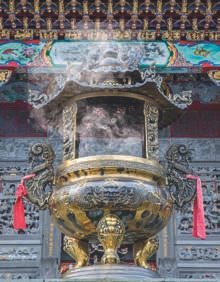
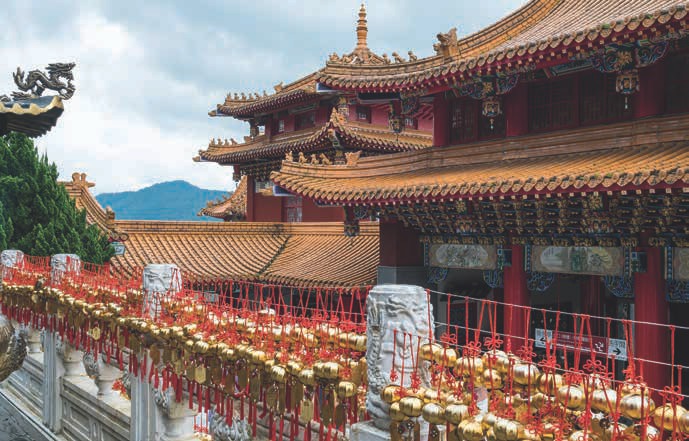
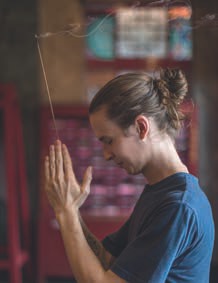
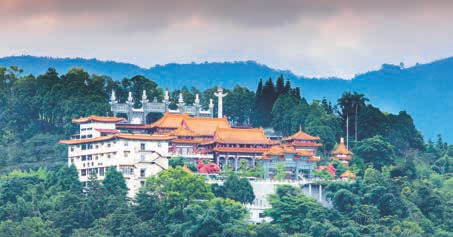
Xuanzang (玄奘) is a hero of ours, and this temple is our favorite spot in all of Sun Moon Lake. Xuanzang was a Tang Dynasty (618 - 907) Buddhist monk who lived one of the most inspiring and amazing lives ever lived on this earth. He lived from 602 to 664, accomplishing more in those sixty-two years than most could do with a hundred. At a time when it was illegal to leave the empire, Xuanzang walked overland on a seventeen-year journey to India, traveling through many kingdoms on the way, facing bandits and other hardships. In 627, he left China, following a dream he had, in which a bodhisattva told him to make the journey. He convinced some Buddhist guards at the border of Qinghai to let him cross in 629. He then arduously crossed the Gobi Desert, escaping robbers in modern-day Uzbekistan, and crossed through Persian Samarkand and other kingdoms until he eventually reached Kashmir in 631. He spent several years traveling in India, staying at many monasteries, practicing with the masters there and gathering sutras. Kings and abbots alike were all impressed by his cultivation and bright mind, each inviting him to stay with them permanently. He went on pilgrimage to the important Buddhist sites and gathered sutras, commentaries and Buddhist icons to bring back to China. In 645, he returned to China with a library of texts, and instead of being punished for leaving, he was celebrated by the emperor and offered an appointment in the capital. Instead, Xuanzang retired to a monastery and spent the rest of his life translating scriptures in what would become one of the largest translation projects ever conducted. He is responsible for bringing to China and translating the Heart Sutra, which we chant every day at the Center.
The Xuanzang temple in Sun Moon Lake has a huge copper map of all the places Xuanzang walked, and you are left stunned at how one person could walk so far. Inside, there is a shrine on the first floor, and then on the third, they have a relic, which they claim to be a piece of Xuanzang's skull. (Whatever it is, it seems to have a powerful effect on the room, creating a deep and lucid stillness.) The upper shrine room with the relic is silent and it is one of our favorite places to meditate in Taiwan. We always stop here and meditate for an hour in the upper shrine room, as the silence is deep and powerful, and our meditation is always worthwhile. Outside, the temple has a nice café where you can drink some red tea and look out at some of the best views of the lake. The quiet, meditative space of the third floor, the views of the lake and the kind nuns who look after the temple make this our favorite place in Sun Moon Lake. No matter how long we are staying, we always make sure to stop by the temple at least once.
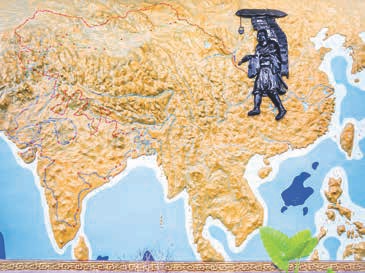
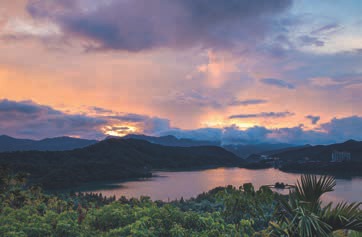
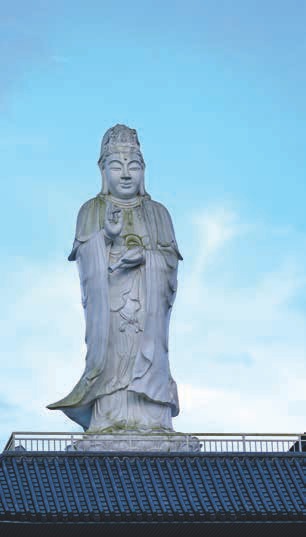
Just outside the lake, in Puli, is one of the world's biggest and most beautiful monasteries. It was built in 2001 by the Chung Tai order, which was founded by the Buddhist master Wei Chueh (惟覺安公老和尚). It is the second-largest monastery in Taiwan, and the grounds are gorgeous. The gardens are filled with trees from all over the world, including a huge Bodhi tree, which is a descendant of the one in Bodhgaya that the Buddha sat under to achieve enlightenment. If you call ahead, you can arrange a tour of the shrine halls of Chung Tai. Otherwise, you can only visit the main hall on the first floor. The themed floors are stunning. There is a pure white floor and a teak pagoda on the top floor, which was hand-built and is surrounded by thousands of copper Buddhas. The monastery also has an adjacent museum, which has a gorgeous collection of Buddhist art spanning millennia and from India to China. There are many must-see pieces inside, including old stone Buddhas from before the Common Era. They also have a wonderful gift shop, where we have found a few of your gifts of the month, and a great vegetarian restaurant with the best veggie sandwiches in Taiwan.
You can take a cable car up to this amusement park, which has roller coasters and other fanfare. We aren't very interested in all that hoopla, though. However, if you are in Taiwan at the end of January to early February, the sakura flowers will be in blossom, and this amusement park has tremendous and gorgeous gardens out back. There is the noise of the rides to deal with, but the gardens themselves are worth it. They are among the most beautifully designed and gorgeously abundant sakura forests we have ever seen. And aside from the noise of the distant rides, there are several pockets in the gardens where you can find a nice, quiet place to drink some tea and enjoy the flowers that fill the world with a dreamlike mist of pink.
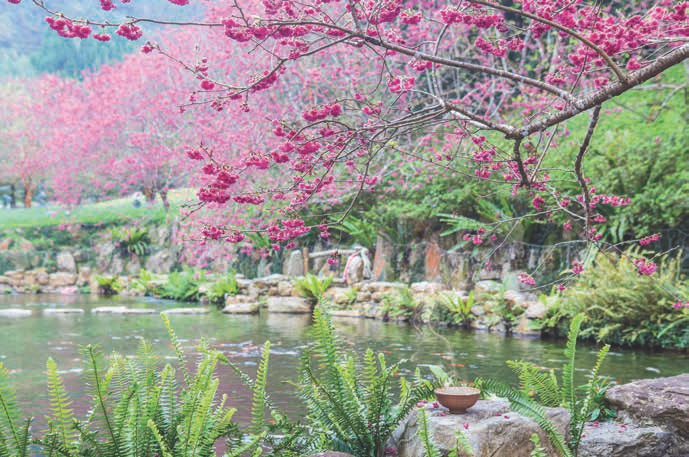
There are two small aboriginal villages on either side of the lake, which is where most of the guest houses and hotels are, so you will most likely be staying in one of the two. There are a lot of shops selling aboriginal trinkets and lots of nice vegetarian street food options, including tofu sandwiches (tofu stuffed with veggies, so the tofu is the bread) and mushroom rice steamed in bamboo.
Both villages are lakeside and have nice docks to stroll on. If you want, you can also buy an all-day boat pass. The boats travel back and forth between three destinations: the two aboriginal villages and a dock below another Xuanzang temple that isn't as nice as the main one we spoke about earlier. With a pass, you can catch any of the boats, which leave every half an hour or so, staying at each location as long as you like. The boat rides are kind of touristy, and we think that the boat traffic can't be great for the lake itself, so we rarely do this.
This gorgeous pagoda was built by Chiang Kai-shek (蔣介石) to honor his mother in 1971. It is built atop the peak of the Shabalan Mountain. The hike up is lovely, passing through calm forests. The pagoda itself is nine stories, rising over forty-six meters to well above 1,000 meters above sea level. In the courtyard, there is a house that was designed by Chiang Kai-shek as well, but we have found it is never open. It is cool to have a peek inside through the windows, though, as all the decor and furniture appears to be the original 1970s decorations, when the building was originally built, and it still looks like a home for greeting dignitaries and guests. You can imagine the president hosting here - maybe even serving some tea, as he was indeed a tea lover. There is a lot of history here.
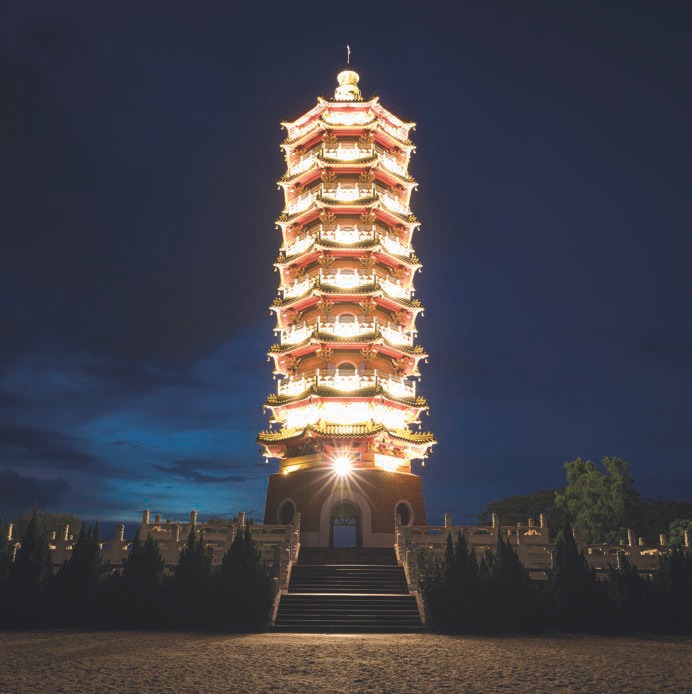
You can climb up the winding staircase to the top of the pagoda and have a wonderful view of the entire lake, especially at sunset. Wu De proposed to Joyce at the top of this pagoda at sunset. We always come here to honor their love, and often drink tea under the trees on the lawn out back, which is quiet and beautiful. None of the tourists ever head off to the side or the back of the pagoda, and there is a lovely lawn with some shady trees that are perfect for a picnic or a nice tea session with some friends. From the top of the pagoda, you can see in all directions: If you face away from the lake, you get a stunning view of Jade Mountain, usually enshrouded in mists. To the lake side, you can circle three directions of the pagoda and have very different vantages of the entire lake. Sunrise or sunset are both worth the hike up the mountain and then around the nine stories of the pagoda to the top.
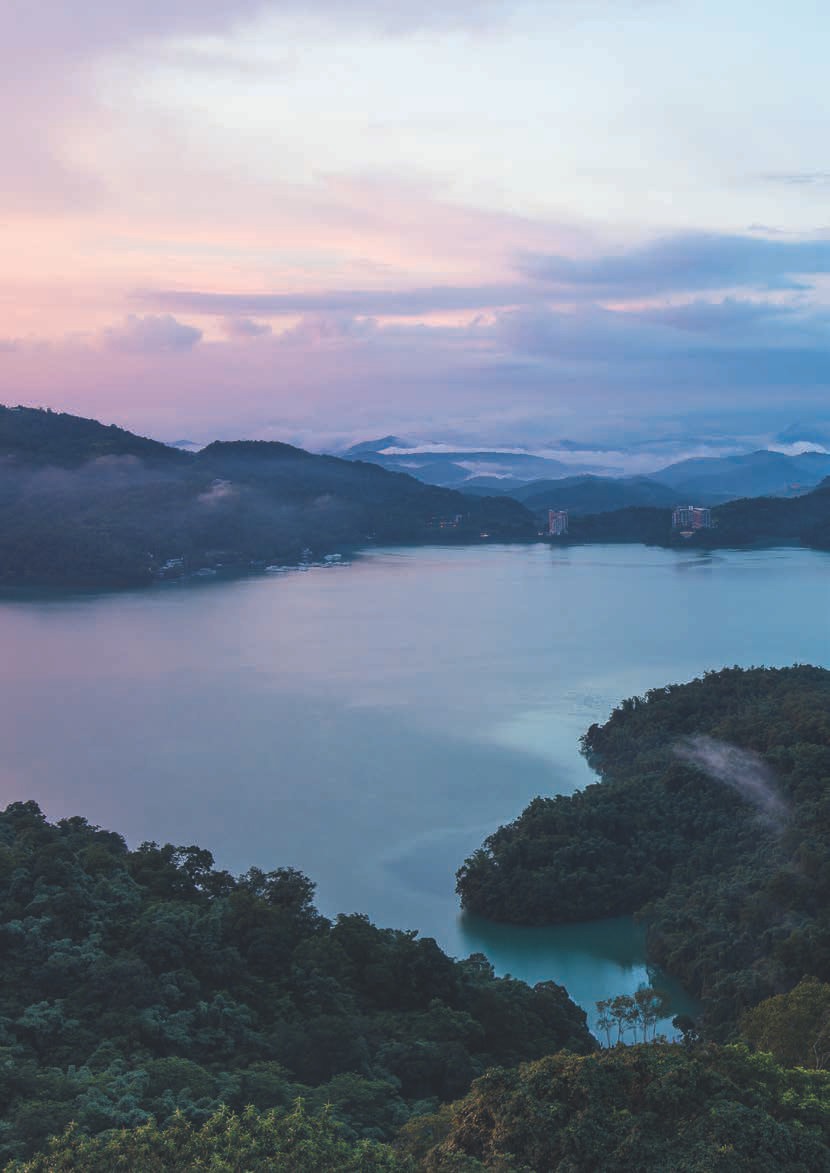
Elevation is a gorgeous red tea. When Japan controlled Taiwan, they brought large-leaf tea seeds from Yunnan and Assam to Taiwan to stimulate a tea industry for export. The large-leaf trees thrived best in Sun Moon Lake, where they built several plantations. At the end of the war, when the Japanese left, these gardens were abandoned. Decades later, farmers started tending them again, though they had become a blend of planted and wild trees by that time. Mr. Su's garden has been preserved organic since then, maintaining a healthy ecology with thriving trees, many of which are eighty to a hundred years old. Mr. Su even bought the land adjacent to his so that his neighbor's inorganic farming would not affect his own. He then chopped down the betel nut trees his neighbor had been growing, which are detrimental to the environment, and is leaving that tea for ten years to restore a natural, healthy ecology.
Elevation is harvested in the summer, when the leaves are budding. Usually, a bud and three leaves are plucked each time. The tea is then withered outdoors briefly, and oxidized in long troughs with fans that maintain a warm airflow. The withering can go on from six to twelve hours. Then, the tea is rolled for around ninety minutes, before being piled on bamboo trays and oxidized again for an hour or two. Finally, the tea is oven-dried. This simple processing suits the wild, verdant trees that made these leaves. (You can learn more about the processing of Elevation and look at several photographs if you go to the "Past Issues" section of our website and look up the October 2016 issue of Global Tea Hut, which also includes several accounts of drinking Elevation from around the world.)
Elevation is one of our all-time favorite bowl teas. It is brimming with Qi and with love. It is best prepared in the morning. We always ask Mr. Su to oxidize our tea a bit less than what he is used to. He thinks we're funny, but always complies. Though this means the tea won't be as sweet, we find that the heavy oxidation reduces the connection the leaf has to the land, resulting in less movement of Qi and connection to Nature. When the tea is left slightly green, it is more vibrant and full of life. We have experimented over the years and found the perfect amount of oxidation: We want to keep it a red tea, but let the green vibrancy of the summer and full body of this amazing environment shine through more pristinely. After you steep this month's tea, you will see that the leaves are still vibrant, slightly green and strong.
We always offer this tea at workshops and events around the world, using it to expose new Chajin to a tea practice. If you are just starting out on your tea journey, this is the perfect month to begin a tea practice every morning. You can start by just putting some leaves in a bowl and sitting quietly for three bowls every morning. If you already have a tea practice, this month is a chance for us all to return to our roots and remember to stay humble. We might also use this occasion to invite over some new friends and introduce them to tea, helping to spread the word and grow this Global Tea Hut.
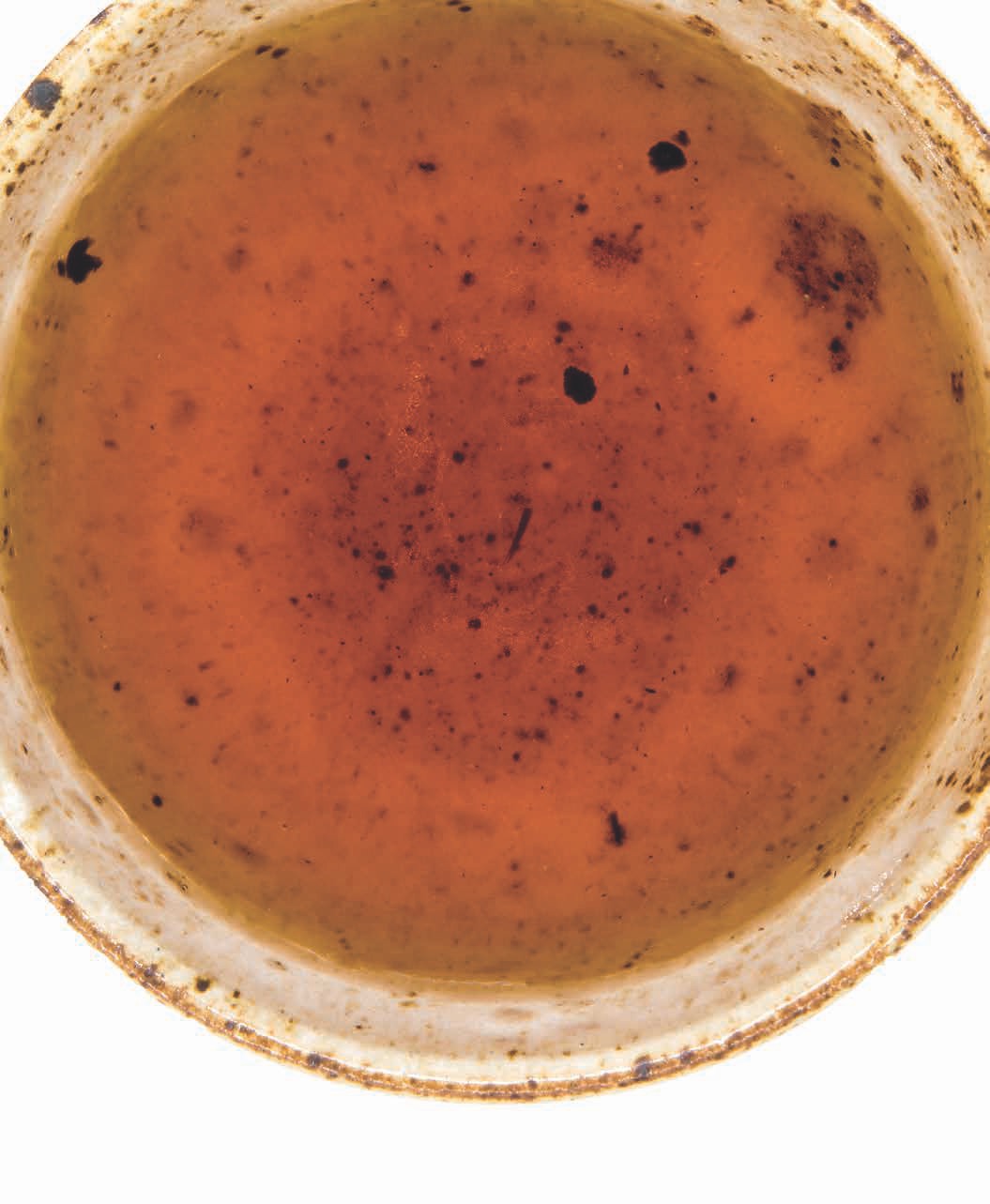
Ordinarily, Elevation is the ultimate leaves in a bowl tea. And we would still suggest brewing it that way, but given that this month's issue is all about sidehandle pot brewing, it may be fun to try some of this month's tea in a sidehandle pot, which some of you may not have tried before. Elevation is bolder and brisker in a sidehandle pot, and slightly more patient as well. We find it is better to add a bit fewer leaves than one would usually do with other red teas, resulting in a golden liquor that is still simple and strong, but with a deep and lasting Qi that wakes the whole morning up.
If you are using a large sidehandle and fewer leaves, you should take the lid off between steepings, as the breaks between steepings in bowl tea are long and large-size pots will steam the tea, giving it a boiled tea flavor. This will help preserve the sweetness of the early steepings and the mineral-rich vibrancy of later ones as well.
For this month's tea, it will be important to use as pure of water as possible, ideally gathered yourself from a spring. We find that expending more time and energy on creating a beautiful chaxi, finding great water and using charcoal - all to prepare a simple, everyday tea like Elevation - is a good practice. Sometimes we get in the habit of only making efforts like this when drinking fine teas and forget to honor the simple, ordinary teas that are also so important to our lives.
Elevation responds best to a strong, martial heat, so make sure the water is very hot for this Tea of the Month, using charcoal if possible. When the water is hot enough, you can experiment with different steeping times, as Elevation becomes a very different tea when flash-steeped or left for a long time. Both are nice to drink, but very different in flavor and energy. It is an interesting experiment to brew the tea in a couple of different ways and see how different the energy becomes in a sidehandle pot. It is brighter and often sweeter in a pot, but bolder in the bowl.
Arise! Awaken! O' hundred-year moment, Hark, the wind and rain; Herald the mountain sun; Call the moonlit orchestra: Ready your voices, Tune up the drone Of a symphony on the verge. Instruments of Spirit, Forged by Nature, Humming a loud unison, Each finding pitch and tone. And then, Still, and wait for it...
An elevated kettle, A breath and a pause, Silence strong and tacit, Growing to a crescendo, The stream billows, holds, Then breaks With the water dance: Leaves twirling In dervish ecstasy, As steam curls and rolls, An infused flight Up beyond the red clouds That cascade off the lake And carry it all away...
